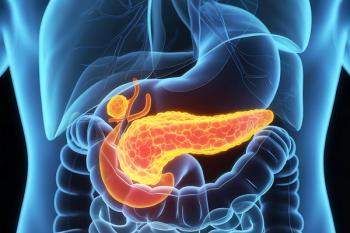
- The Column-09-09-2015
- Volume 11
- Issue 16
Measuring Melamine Exposure
Researchers from Kaohsiung Medical University in Taiwan have been investigating melamine and have shown that melamine tableware is a potential source of melamine exposure and that workers in a melamine tableware factory are subsequently at a higher risk of renal injury associated with ambient melamine exposure.
Melamine first came under the spotlight in 2008, when infant milk powder was contaminated with melamine hospitalizing more than 50,000 babies in China. Melamine is an industrial chemical, and so is not approved for use in food and drink but it can be added to inflate the nitrogen content. In the 2008 scandal, melamine had been added to bulk up the nitrogen content and apparent protein content of milk that was then sold to manufacturers of infant milk formula. At the time this raised questions about what the expected baseline of melamine is and what the sources are in everyday life. Researchers from Kaohsiung Medical University in Taiwan have been investigating melamine and have shown that melamine tableware is a potential source of melamine exposure and that workers in a melamine tableware factory are subsequently at a higher risk of renal injury associated with ambient melamine exposure.1,2
Melamine is used together with formaldehyde to make a hard-wearing polymer resin for melamine tableware. Melamine tableware is approved and safe for use, but is not advised for hot food and drinks because melamine can leach out of the resin into food when heated, albeit at low concentrations. In a study published in the journal Environmental Science and Technology published in July 2015, researchers recruited 88 volunteers to partake in a trial involving substituting melamine tableware with stainless steel tableware.2 Melamine was measured in urine samples using liquid chromatography–mass spectrometry (LC–MS) before and after the substitution. They found that stopping the use of melamine tableware decreased melamine exposure by 41–91% from baseline level.
In a separate study that set out to determine the risk of ambient exposure to melamine, 44 workers from two melamine tableware producing factories and 105 workers from one ship-building company were recruited. Samples of participants urine, plasma, and ambient area were taken and analyzed using LC–MS–MS. The authors found temporal changes in urinary melamine concentrations - melamine dropped on nonworking days - and a correlation with biomarkers of renal injury. Ming-Tsang Wu from Kaohsiung Medical University in Taiwan, told The Column: “I am an occupational medicine physician as well as a physician scientist. Thus, I know the popular-use melamine tableware should be made by melamine manufacturing company. I looked at the literature and found no one has done the melamine impact on health effect, particularly renal function, in this working population. So, I decided to pursue this question.”
According to Wu, the next steps are to solve the problem, so future work will involve an intervention plan to introduce ventilation. Wu said: “I plan to improve their working environment, and I sincerely hope I can see the melamine exposure levels dramatically decline and their health (early biomarkers of renal tubular injury) improve.” - B.D.
References
- M-T. Wu et al., Environmental Science & Technology DOI: 10.1021/acs.est.5b01965 (2015).
- C.F. Wu et al., Journal of the American Society of Nephrology DOI: 10.1681/ASN.2014121233 (2015).
Articles in this issue
over 10 years ago
Vol 11 No 16 The Column September 09, 2015 Europe and Asia PDFover 10 years ago
Vol 11 No 16 The Column September 09, 2015 North American PDFover 10 years ago
Untargeted Metabolomics for Marine Pollution Analysis Using GC–MSover 10 years ago
High-Throughput Screening of Heparin Using LC–MSNewsletter
Join the global community of analytical scientists who trust LCGC for insights on the latest techniques, trends, and expert solutions in chromatography.





